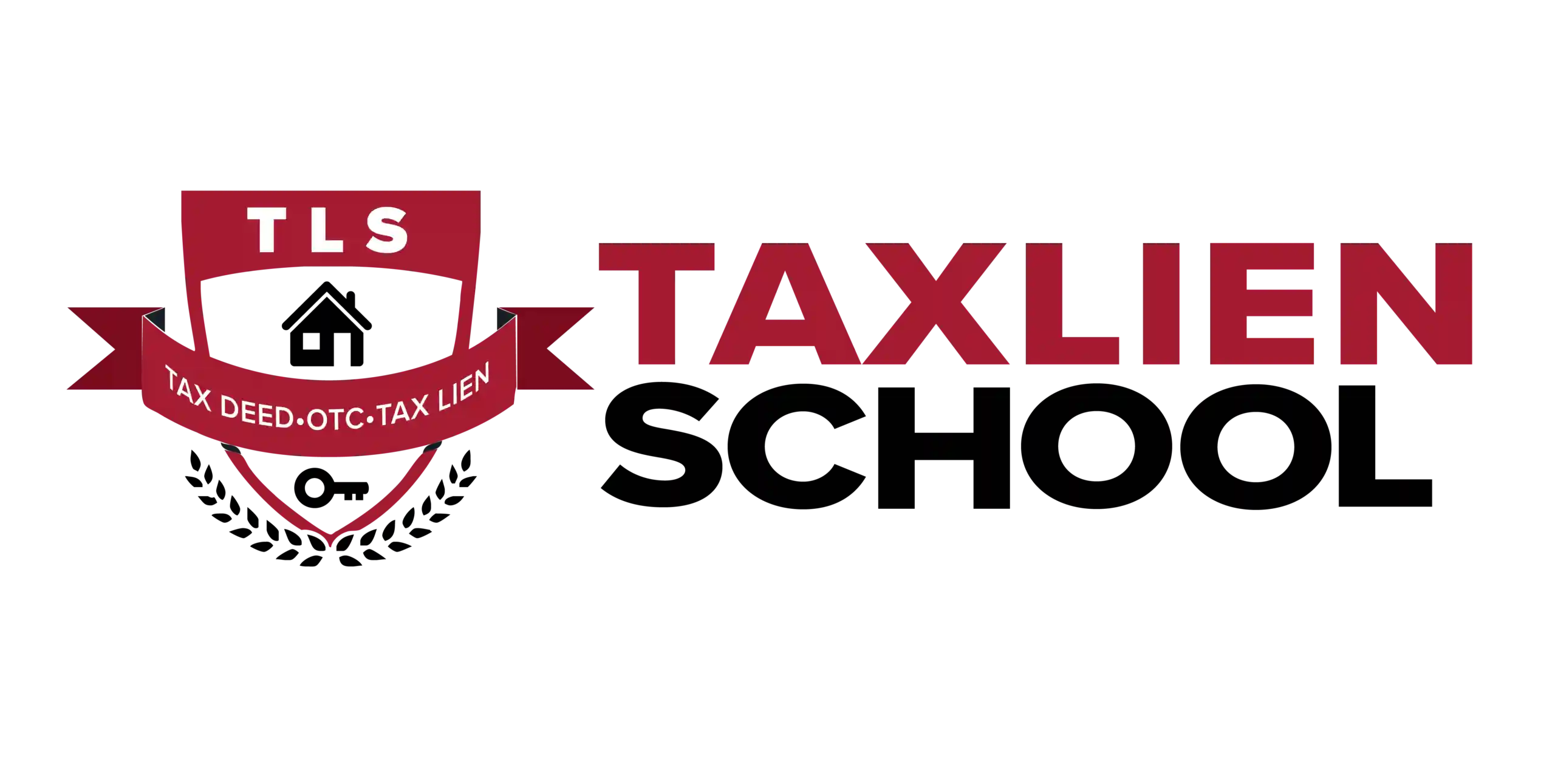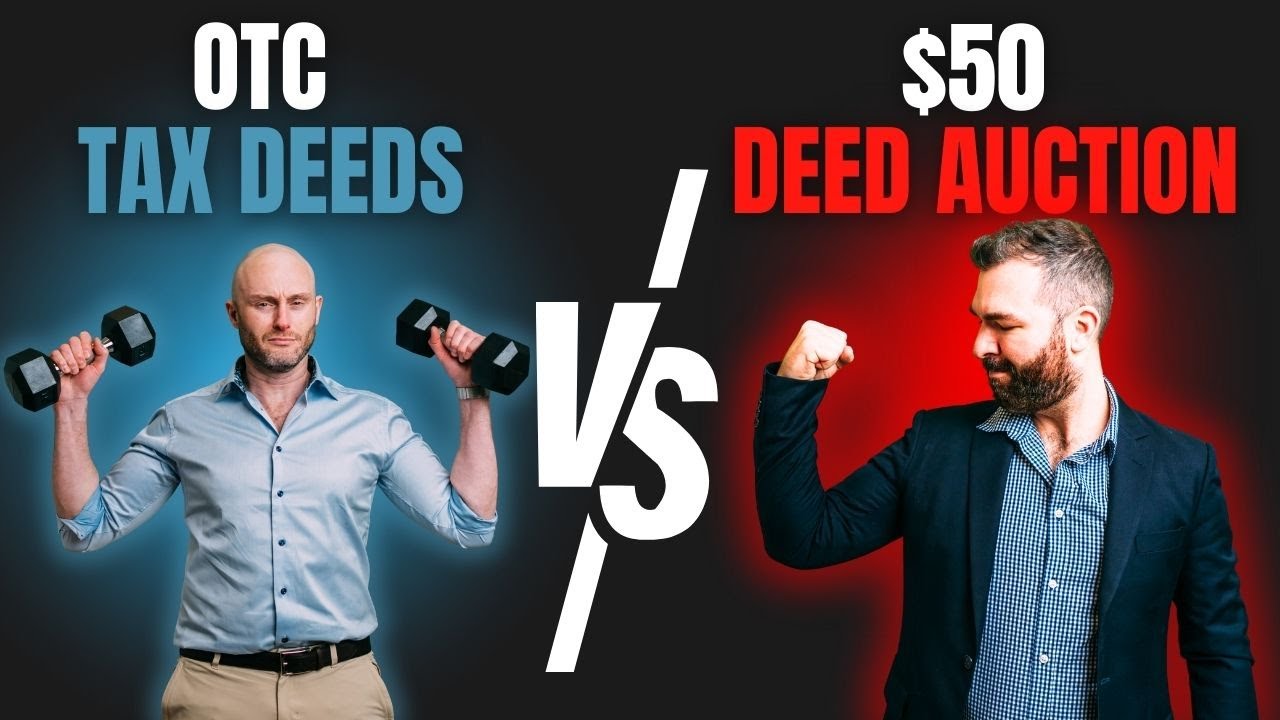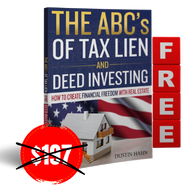Last Updated on October 23, 2025
Table of contents
Buying property through public auctions is a way to get into real estate for a low price. Two methods often discussed are over‑the‑counter (OTC) tax deeds and $50 deed auction sales. Both involve buying properties that local governments want to get off their books, but they work in different ways. This explains the differences and shows how beginners can find chances to buy while keeping risks low.
What are OTC tax deeds?
When a property owner does not pay property taxes, the county can take the property and sell it at auction. If no one bids at the auction or the winning bidder cannot pay, the property becomes an over‑the‑counter (OTC) tax deed. OTC deeds can be purchased straight from the county with no other bidders. You only pay the back taxes and fees. Because there is no competition, the cost can be pennies on the dollar compared with what the property is worth. Still, buyers must research each property. Some OTC properties stay unsold because they have problems like no road access, pollution issues or a house that needs too much repair.
Pros of OTC tax deeds
- Direct purchase from the county – you do not compete against other bidders, and you can finish the purchase by paying the back taxes and fees.
- Potentially big savings – because you buy for about the amount of taxes owed, some properties may be worth much more than the purchase price. In some states, over‑the‑counter tax liens earn high interest rates, like 16 % in Arizona.
- No waiting period in tax deed states – in states where a tax deed gives you ownership right away, you receive the deed immediately.
Cons of OTC tax deeds
- Hidden risks – properties may have serious structural problems or may be tiny slivers of land.
- State‑specific rules – some states hold a second auction before properties become OTC.
- Research is essential – buyers should check title issues, zoning and property condition before paying any money.
What is a $50 deed auction?
Some counties run forfeited land sales for properties that did not sell at regular sheriff’s auctions. In Hamilton County, Ohio, tax foreclosed properties offered for sale twice and not sold are offered again at the county’s forfeited land sale. These sales used to have a very low starting bid. The county’s blog notes that all parcels in the regular forfeited land sale now have a minimum bid of $50. In the auction, many properties start at $50, and if no one bids at the opening price, the auctioneer may lower the bid to the minimum. This makes it possible to buy a house with real value for a very small price.
Key features of the $50 auction
- In‑person sale – bidders must register and attend the county’s forfeited land sale, which is held when needed.
- Low minimum bid – all parcels in the regular forfeited land sale require a minimum bid of $50.
- Reoffered properties – if a parcel does not sell at its opening bid, the county can offer it again at a lower price or at the $50 minimum.
- Buyer pays back taxes and fees – winning bidders must pay any unpaid taxes, transfer costs and recording fees.
OTC deeds vs. $50 auction properties: a comparison
| Feature | OTC Tax Deeds | $50 Deed Auction (Forfeited Land Sale) |
| How to buy | Buy directly from the county after the property does not sell at auction. | Attend a public sale where forfeited properties are offered again with a low starting bid. |
| Competition | None – you buy from the county; some counties keep waiting lists. | You compete with others in person; the low starting bid may draw more bidders. |
| Price | Usually equal to unpaid taxes and fees; can be pennies on the dollar. | Minimum bid of $50; final price depends on how many people bid. |
| Property condition | Varies widely – may include empty lots, burned buildings or usable land. | Similar variation – some houses need major repairs, while others have a high value. |
| Research required | High. Buyers must check title, zoning, access and any legal issues. | High. Buyers should check the property, look up the parcel data and check for liens before bidding. |
| Payment | Full payment of taxes and fees is due at the time of purchase; some counties accept cash or certified funds. | Full payment is due at the auction; registration and a deposit may be needed. |
| Availability | Depends on county and state laws; lists may be online or require a request. | Usually held once or twice a year; properties are listed before the sale on the county’s website. |
How to evaluate an OTC Tax Deed or auction property
- Find the parcel information.
Counties publish lists of OTC deeds or forfeited sale properties. Note the parcel number, address, assessed value and starting bid.
- Check the assessed value.
Compare the county’s assessed value with market estimates. In Hamilton County, some parcels had assessed values over $100,000 yet were offered with a $50 minimum bid. Look at county records and other real‑estate sites to estimate value.
- Inspect the property.
Visit the site or hire someone local. Check whether a building exists, whether it is empty or occupied, and how much work is needed.
- Look for liens or claims.
Tax deeds usually wipe out some liens, but local charges or other claims might remain. Do a title search or hire a title company.
- Understand state and county rules.
Some states give owners time to redeem the property or charge extra fees. Hamilton County’s Q&A explains that tax foreclosed properties not sold in two sheriff’s sales go to the forfeited land sale. Make sure you know redemption rights, payment methods and deadlines.
Example opportunities
During the Hamilton County forfeited land sale highlighted in the video, the team found parcels with surprising potential. One parcel at 75 Harrison Avenue, Cleves, Ohio, had an assessed value of around $156,000, yet the opening bid was about $16,211. If no one meets that bid, the county can reoffer the parcel with a minimum bid of $50, meaning a buyer could get a valuable property for a few hundred dollars. Another parcel with an assessed land value of over $700,000 was listed with back taxes of more than $486,000; if it does not sell, the county could take much less just to put it back on the tax rolls. These examples show how important it is to research, attend the sale and act quickly.
Frequently Asked Questions
No. A tax deed gives you the property. A tax lien is only a claim on unpaid taxes. Both can be sold over the counter when they do not sell at auction. Over‑the‑counter tax liens and deeds are bought directly from the county.
No. Anyone can buy tax‑foreclosed property at these sales. The sales are open to the public. You do not need a license, but you should know the local rules and may want legal or financial advice.
Hamilton County explains that properties offered for sale twice and not sold at sheriff’s auctions are offered again at the forfeited land sale. The county’s blog notes that all parcels in the regular sale have a minimum bid of $50. The county would rather put the property back on the tax rolls than hold it forever, even if that means selling for a low price.
OTC deeds and $50 auction properties can have hidden problems. Some may be small strips of land, have serious damage or have unpaid bills that survive the sale. Always do your research. This includes a title search, property inspection and checking local rules.
Conclusion
OTC tax deeds and $50 deed auctions present real opportunities for investors willing to research and act. Over‑the‑counter deeds eliminate competition and can provide properties for the cost of back taxes. Forfeited land sales, such as those in Hamilton County, offer another chance to acquire properties for as little as $50. Both strategies require careful due diligence—verify the property’s value, condition and legal status before buying. With patience and preparation, these overlooked sales can help investors build wealth from distressed real estate.






